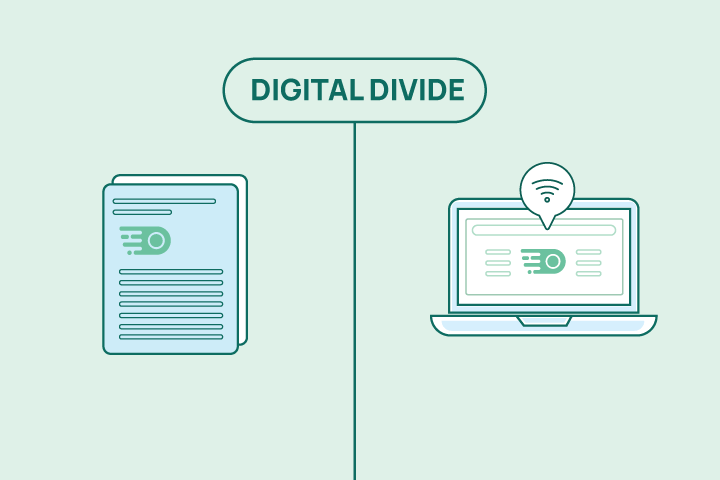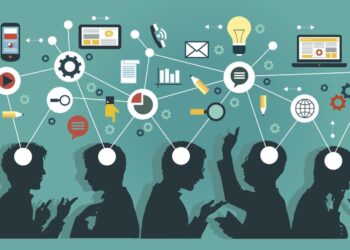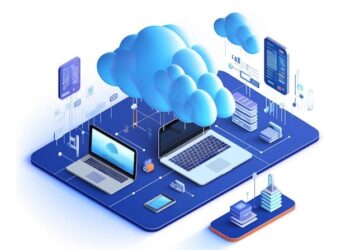In an increasingly digitized world, access to the internet and digital resources has transitioned from a mere convenience to a fundamental necessity. From education and employment to healthcare and civic participation, nearly every facet of modern life now relies on online connectivity. However, this critical reliance has starkly exposed a pervasive issue: digital inequity. Millions globally, even within technologically advanced nations, remain underserved or completely disconnected, leading to a widening gap in opportunities and perpetuating socioeconomic disparities. This comprehensive article delves into the critical importance of achieving equity in online access, exploring the multifaceted nature of the digital divide, its profound implications across various sectors, the innovative strategies being implemented to bridge this chasm, and the formidable challenges that must be overcome to ensure truly inclusive digital participation.
The Digital Divide

The term “digital divide” refers to the gap between those who have reliable access to current information and communications technology (ICT) and those who do not. This isn’t just about whether someone has an internet connection; it encompasses a complex interplay of factors that dictate the quality, affordability, and utility of that access.
A. Infrastructure Access (Broadband Availability): A primary component of the digital divide is the sheer lack of physical infrastructure, particularly in rural, remote, or economically disadvantaged areas. Laying fiber optic cables or deploying reliable wireless networks is often costly and commercially unattractive for providers in low-density or low-income regions. This creates “broadband deserts” where high-speed internet is simply unavailable.
B. Affordability: Even where infrastructure exists, the cost of internet subscriptions, data plans, and necessary hardware (computers, smartphones, tablets) can be prohibitive for low-income households. A family might prioritize food and housing over a broadband connection, even if it’s technically available. This affordability gap creates a significant barrier to entry for many.
C. Digital Literacy and Skills: Having access to a device and connectivity is meaningless without the skills to use them effectively. Many individuals, especially older adults, those with limited educational backgrounds, or those from underserved communities, lack the fundamental digital literacy skills required to navigate the internet, use online tools, or discern credible information. This “skill gap” is a crucial, often overlooked, aspect of the divide.
D. Relevant Content and Language Barriers: For digital access to be truly equitable, the online content must be relevant, accessible, and in a language users understand. Much of the internet’s content is in dominant languages, creating barriers for non-native speakers. Furthermore, content tailored to specific cultural contexts or local needs is often lacking.
E. Device Availability and Quality: While smartphones have become widespread, relying solely on a small screen can limit productivity and learning, especially for tasks requiring more complex interactions. Access to a personal computer or laptop with sufficient processing power and an up-to-date operating system is often crucial for meaningful digital participation.
F. Disability and Accessibility: Individuals with disabilities often face unique challenges in accessing digital content due to websites or applications not being designed with accessibility features (e.g., screen readers, voice controls). Ensuring digital platforms are inclusive is a critical, yet often neglected, aspect of equity.
G. Motivation and Perceived Relevance: Some individuals may not see the immediate relevance or benefit of internet access, particularly if they haven’t experienced its advantages firsthand. This can be more common in communities where traditional methods suffice for daily needs, making the perceived value of going online lower.
The Profound Implications of Digital Inequity
The consequences of the digital divide are far-reaching, exacerbating existing social and economic disparities across multiple sectors.
A. Educational Disparity: In an era of online learning, digital textbooks, and virtual classrooms, a lack of reliable internet access and devices creates a significant educational disparity. Students without online access fall behind, struggle with homework, miss out on critical resources, and are less prepared for higher education and future careers. The COVID-19 pandemic starkly highlighted this, with many students unable to participate in remote learning.
B. Employment and Economic Exclusion: The modern job market heavily relies on online applications, digital résumés, and virtual interviews. Many jobs require digital skills, even at entry-level. Those without online access or digital literacy are at a severe disadvantage in finding, applying for, and retaining employment, leading to economic exclusion and reduced earning potential.
C. Healthcare Access and Outcomes: Telemedicine has become a vital component of healthcare delivery, especially in remote areas. Without online access, individuals cannot participate in virtual consultations, access online health information, schedule appointments, or manage prescriptions, leading to poorer health outcomes and limited access to critical medical support.
D. Civic and Political Participation: Online platforms are increasingly used for civic engagement, accessing government services, voting information, and participating in public discourse. A lack of digital access can disenfranchise citizens, limiting their ability to stay informed, voice their opinions, and participate fully in democratic processes.
E. Social Isolation and Well-being: The internet connects people, enables social interaction, and provides access to entertainment and support networks. Digital exclusion can lead to increased social isolation, particularly for the elderly or those with mobility issues, negatively impacting mental health and overall well-being.
F. Access to Information and Opportunities: Whether it’s accessing news, financial services, online shopping for essential goods, or entrepreneurial opportunities, the internet is a gateway to a vast array of information and services. Digital exclusion means missing out on conveniences, cost savings, and avenues for personal and professional growth.
G. Exacerbating Existing Inequalities: The digital divide doesn’t exist in isolation; it magnifies and reinforces existing inequalities based on socioeconomic status, race, geography (urban vs. rural), age, and disability. It creates a cycle where lack of digital access prevents upward mobility, trapping individuals and communities in disadvantage.
Innovative Strategies for Digital Equity

Addressing the digital divide requires a multi-pronged, collaborative approach involving governments, private sector, non-profits, and communities.
A. Investing in Broadband Infrastructure: Governments and private companies must prioritize extending high-speed broadband infrastructure to underserved areas. This includes financial incentives for providers, public-private partnerships, and exploring diverse technologies like fiber optics, 5G, satellite internet, and fixed wireless access to ensure universal coverage.
B. Affordable Internet Programs: Implementing subsidies or low-cost internet programs for low-income households can significantly reduce the financial barrier to access. Examples include government-funded affordability programs, community broadband initiatives, and internet service provider (ISP) programs offering discounted rates.
C. Device Distribution and Refurbishment Programs: Providing access to affordable or free devices (computers, laptops, tablets) through government initiatives, non-profit organizations, or school programs is crucial. Computer refurbishment programs can repurpose older devices, extending their life and making them accessible.
D. Digital Literacy Training and Education: Comprehensive digital literacy programs are essential. These should target diverse populations, including seniors, parents, and job seekers, offering training in basic computer skills, internet navigation, online safety, and critical evaluation of information. Libraries, community centers, and schools are ideal venues.
E. Community Access Points (Public Wi-Fi, Libraries): Establishing or enhancing public Wi-Fi hotspots in community centers, libraries, parks, and other public spaces provides crucial access for those who cannot afford home internet. Libraries, in particular, play a vital role as free access points and digital learning hubs.
F. Developing Relevant and Localized Content: Encouraging the creation of online content that is culturally relevant, locally specific, and available in multiple languages helps ensure that digital resources meet the diverse needs of communities and are genuinely useful to all users.
G. Promoting Digital Inclusion for All Abilities: Mandating and incentivizing accessible website design, assistive technologies, and inclusive digital learning materials ensures that individuals with disabilities can fully participate online. This requires awareness and adherence to accessibility standards.
H. Policy and Regulatory Support: Governments can implement policies that promote competition among ISPs, regulate pricing, and establish universal service obligations to ensure that digital access is treated as a public utility, available to all citizens.
I. Public Awareness Campaigns: Educating the public about the benefits and necessity of online access can increase motivation and perceived relevance, encouraging more individuals to seek out digital resources and training.
J. Collaborative Ecosystems: Fostering partnerships between schools, businesses, non-profits, and local governments to pool resources, share expertise, and develop integrated solutions for bridging the digital divide at a community level. This holistic approach ensures sustained impact.
Remaining Challenges in Achieving Digital Equity
Despite concerted efforts, significant challenges persist in the quest for truly equitable online access.
A. Sustaining Funding and Investment: Bridging the digital divide requires massive, sustained financial investment in infrastructure, programs, and training. Securing long-term funding, especially for ongoing operational costs, remains a significant challenge.
B. Rapid Technological Obsolescence: Technology evolves at a breakneck pace. What constitutes “adequate” access or a “modern” device today may be obsolete in a few years, requiring continuous investment and upgrades to maintain equity.
C. Measuring and Monitoring Impact: Accurately measuring the extent of the digital divide and the impact of intervention programs can be complex. Reliable data collection and consistent monitoring are needed to ensure strategies are effective and resources are allocated optimally.
D. Addressing the “Why”: Motivation and Perception: Beyond physical and financial barriers, convincing some individuals and communities of the immediate relevance and long-term benefits of digital access can be challenging. Shifting mindsets takes time and tailored approaches.
E. Geographical and Topological Hurdles: For extremely remote or geographically challenging areas (e.g., mountainous regions, scattered islands), deploying high-speed, reliable internet infrastructure remains a significant engineering and cost hurdle.
F. Cybersecurity Concerns and Digital Trust: As more aspects of life move online, concerns about data privacy, cybersecurity threats, and misinformation can deter some individuals from engaging digitally, even if they have access. Building digital trust is paramount.
G. Policy Fragmentation and Coordination: Addressing digital inequity often involves multiple government agencies, private companies, and community groups, leading to fragmented policies or a lack of coordinated effort. Unified national strategies are often needed.
H. Cultural Adaptation of Programs: Digital literacy and access programs need to be culturally sensitive and adapted to the specific needs and contexts of diverse communities to be truly effective. A one-size-fits-all approach rarely works.
I. Evolving Definition of “Access”: The definition of “adequate” or “equitable” access is constantly evolving. What was considered high-speed internet a decade ago is now insufficient. This moving target makes sustained equity a continuous challenge.
Conclusion
The pursuit of equity in online access is more than an economic or technological endeavor; it is a fundamental human rights issue in the 21st century. Just as access to clean water, education, and healthcare are considered basic necessities, so too is reliable and affordable internet connectivity. The digital divide is a barrier to opportunity, a perpetuator of inequality, and a hindrance to global progress.
By actively investing in robust infrastructure, ensuring affordability, fostering digital literacy, and creating inclusive online environments, nations can unlock the full potential of all their citizens. Bridging the digital divide isn’t merely about providing internet connections; it’s about empowering individuals, strengthening communities, and building a more equitable, informed, and prosperous global society. The effort required is substantial, but the rewards – a truly inclusive digital future where no one is left behind – are immeasurable. The time for comprehensive action is now, to ensure that the promise of the digital age is accessible to all, not just a privileged few.












